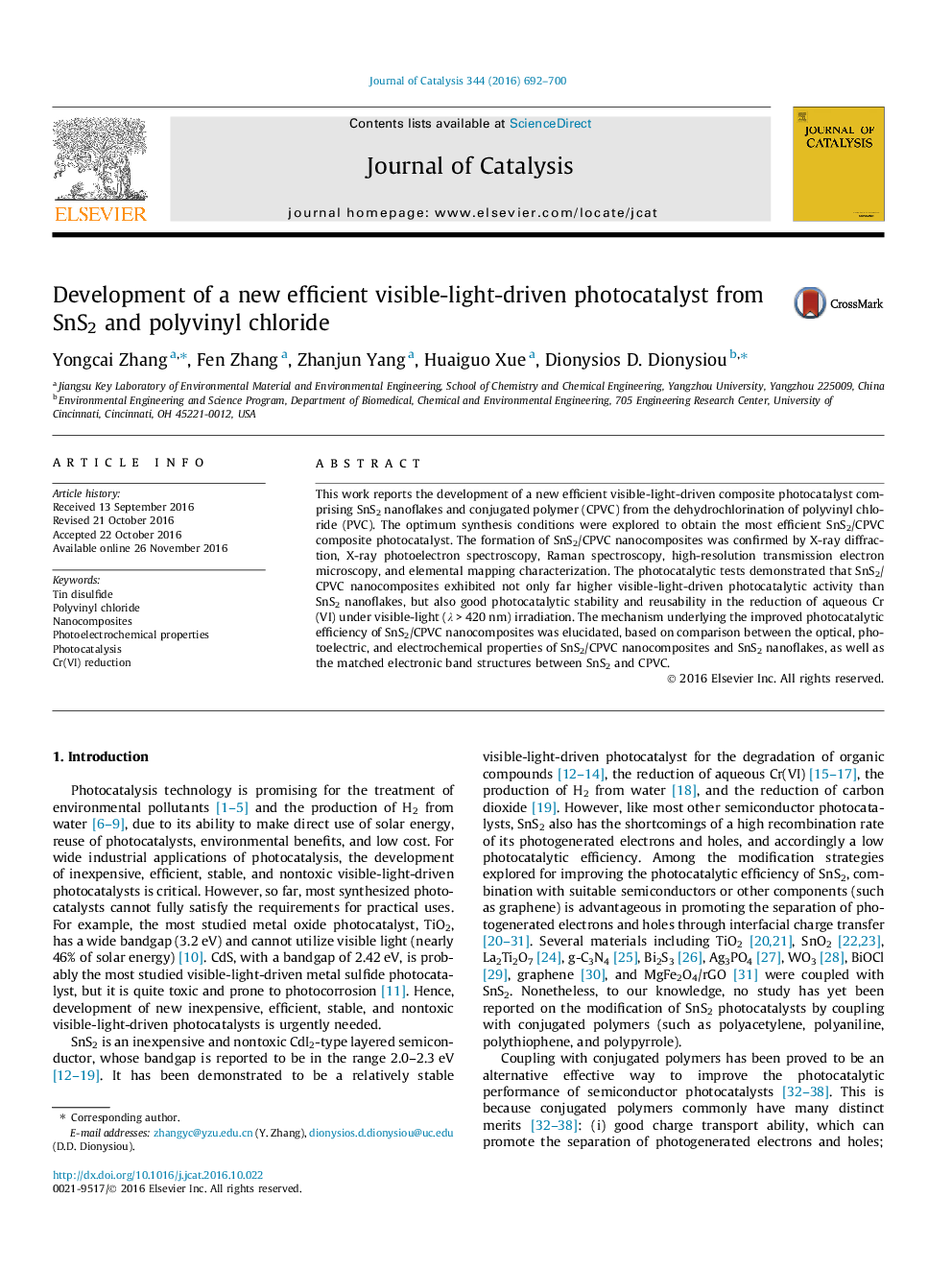| Article ID | Journal | Published Year | Pages | File Type |
|---|---|---|---|---|
| 6455912 | Journal of Catalysis | 2016 | 9 Pages |
â¢A new visible light photocatalyst was developed from SnS2 and polyvinyl chloride.â¢The new photocatalyst exhibited much higher activity than SnS2 in Cr(VI) reduction.â¢The new photocatalyst demonstrated good photocatalytic stability and reusability.â¢A photocatalytic mechanism was proposed.â¢Reasons for the new catalyst's improved photocatalytic efficiency were elucidated.
This work reports the development of a new efficient visible-light-driven composite photocatalyst comprising SnS2 nanoflakes and conjugated polymer (CPVC) from the dehydrochlorination of polyvinyl chloride (PVC). The optimum synthesis conditions were explored to obtain the most efficient SnS2/CPVC composite photocatalyst. The formation of SnS2/CPVC nanocomposites was confirmed by X-ray diffraction, X-ray photoelectron spectroscopy, Raman spectroscopy, high-resolution transmission electron microscopy, and elemental mapping characterization. The photocatalytic tests demonstrated that SnS2/CPVC nanocomposites exhibited not only far higher visible-light-driven photocatalytic activity than SnS2 nanoflakes, but also good photocatalytic stability and reusability in the reduction of aqueous Cr(VI) under visible-light (λ > 420 nm) irradiation. The mechanism underlying the improved photocatalytic efficiency of SnS2/CPVC nanocomposites was elucidated, based on comparison between the optical, photoelectric, and electrochemical properties of SnS2/CPVC nanocomposites and SnS2 nanoflakes, as well as the matched electronic band structures between SnS2 and CPVC.
Graphical abstractDownload high-res image (138KB)Download full-size image
